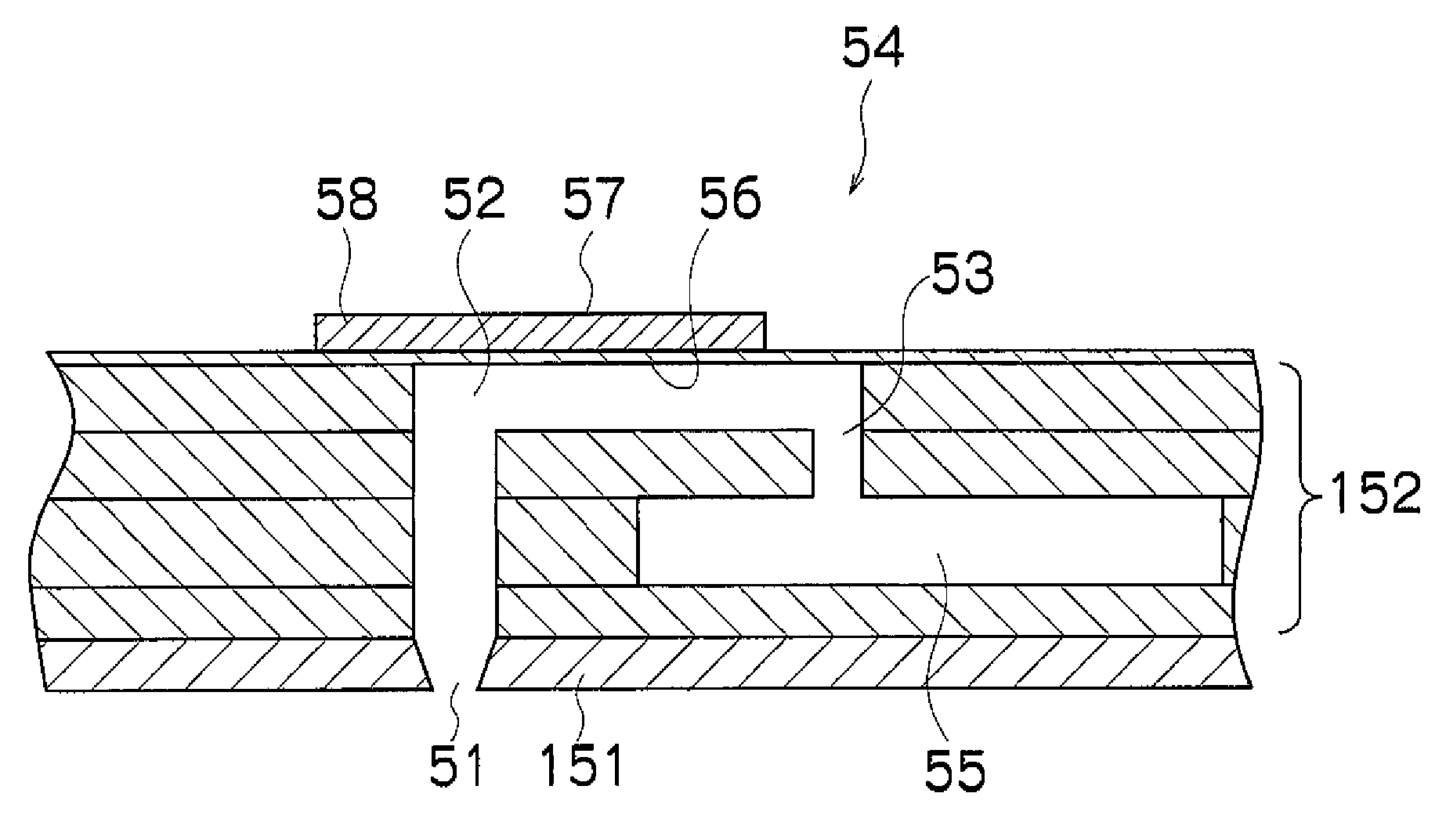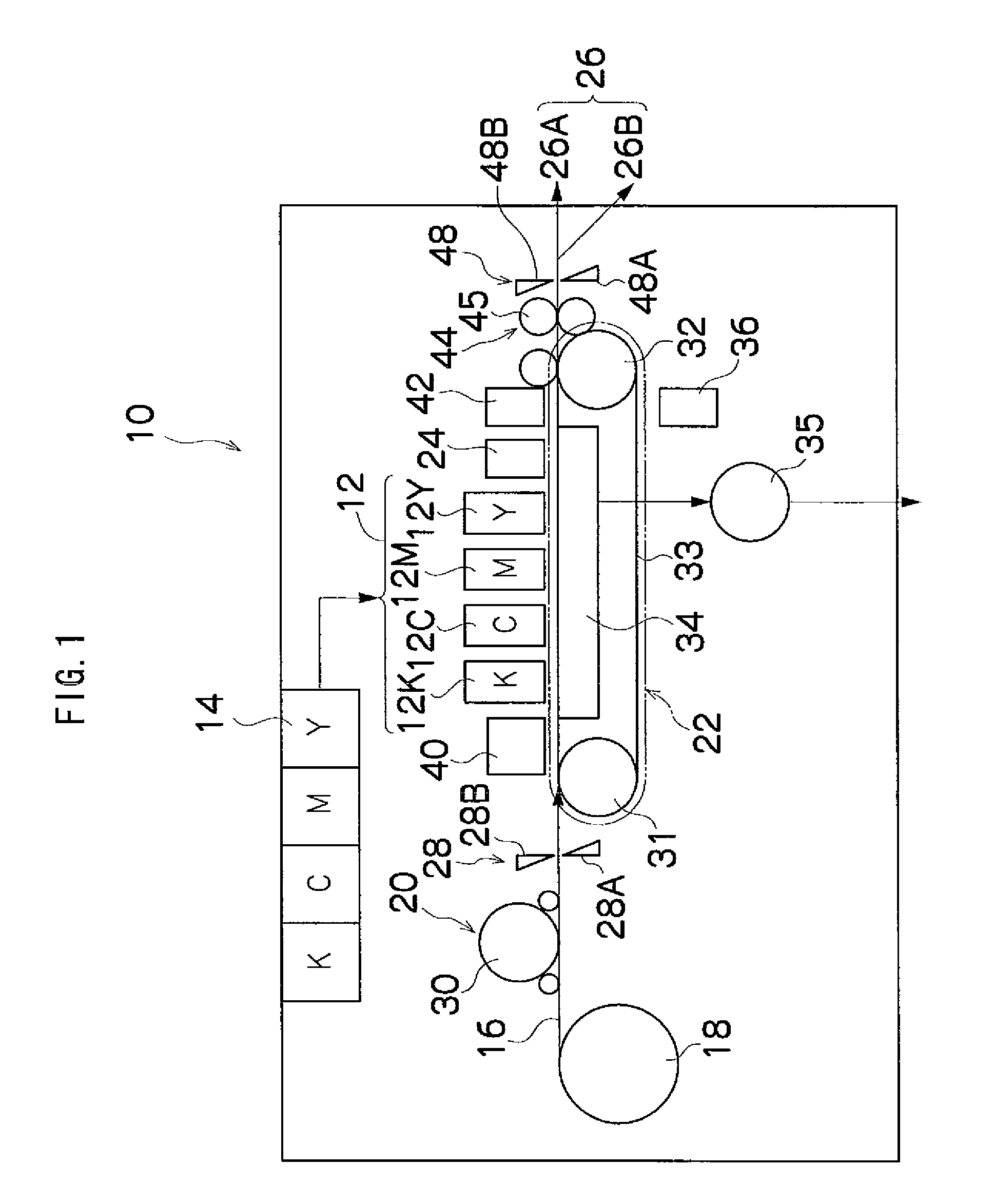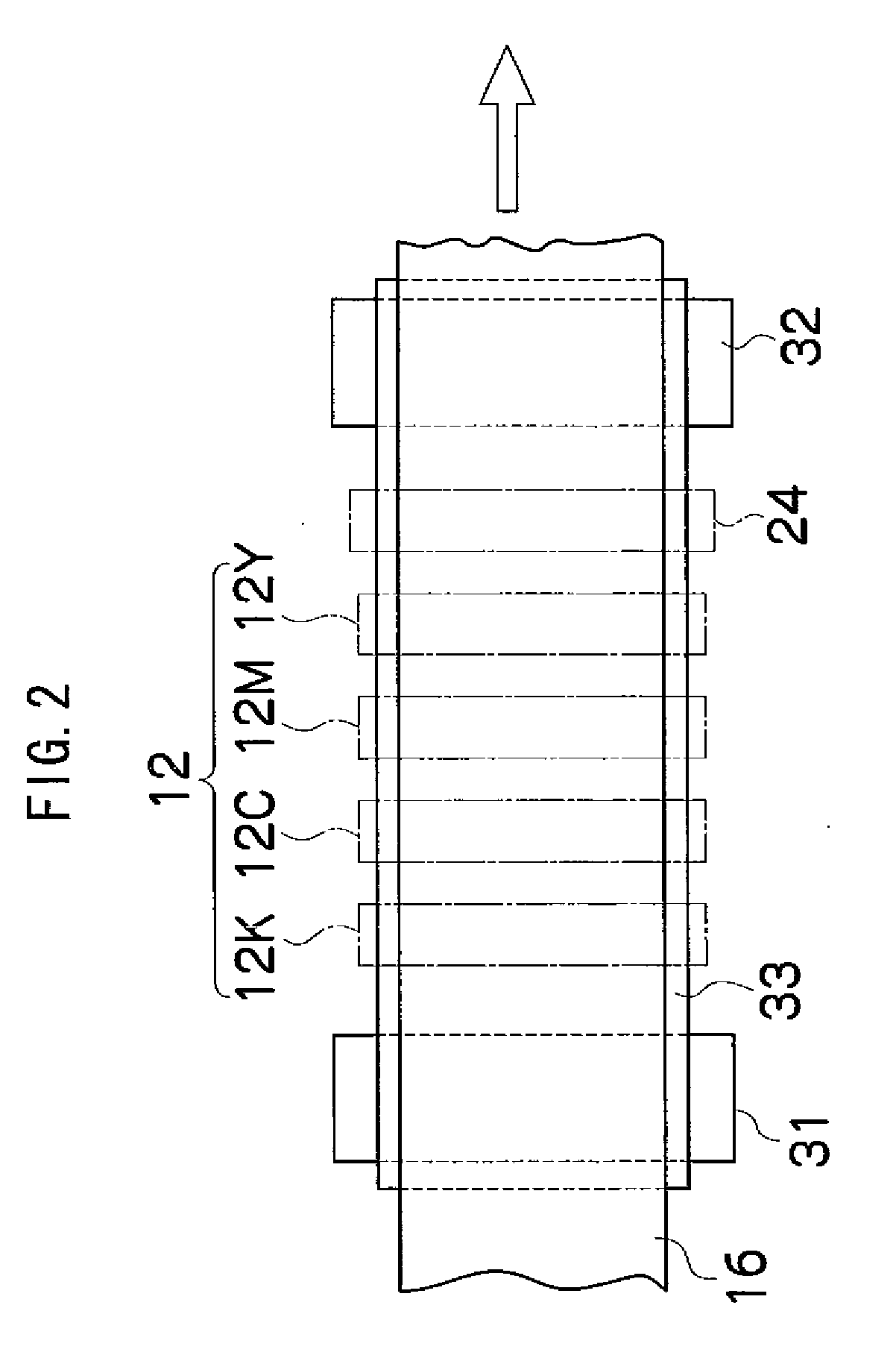Method of manufacturing flow channel substrate for liquid ejection head
- Summary
- Abstract
- Description
- Claims
- Application Information
AI Technical Summary
Benefits of technology
Problems solved by technology
Method used
Image
Examples
first embodiment
[0035]FIG. 1 is a general schematic drawing showing an inkjet recording apparatus forming an image recording apparatus comprising a liquid ejection head having a flow channel substrate relating to an embodiment of the present invention.
[0036]As shown in FIG. 1, the inkjet recording apparatus 10 comprises: a print unit 12 having a plurality of print heads (liquid ejection heads) 12K, 12C, 12M, and 12Y for ink colors of black (K), cyan (C), magenta (M), and yellow (Y), respectively; an ink storing and loading unit 14 for storing inks of K, C, M and Y to be supplied to the print heads 12K, 12C, 12M, and 12Y; a paper supply unit 18 for supplying recording paper 16; a decurling unit 20 for removing curl in the recording paper 16 supplied from the paper supply unit 18; a suction belt conveyance unit 22 disposed facing the nozzle face (the surface of the nozzle plate formed with nozzles for ejecting ink) of the print unit 12, for conveying the recording paper 16 while keeping the recording...
second embodiment
[0109]Next, a method of manufacturing the flow channel substrate according to the present invention will be described.
[0110]The second embodiment is substantially the same as the first embodiment described above, but it differs in that vacuum ultraviolet light irradiation is used for removing the lyophobic film 114 in transferring from FIGS. 8D and 8E.
[0111]In other words, in the second embodiment, positive resist is used for the sacrificial layer 112 such as a PMER P-LA900PM made by Tokyo Ohka Kogyo Co., Ltd. or an AZ10-XT made by AZ Electronic Materials., fluoroalkyl-silane is used for the lyophobic film 114, and vacuum ultraviolet light is used for removing the lyophobic film 114.
[0112]Apart from the removal of the lyophobic film 114, the second embodiment is the same as the first embodiment, and therefore only the removal of the lyophobic film 114 is described here.
[0113]FIGS. 9A to 9C show steps for removing the lyophobic film 114 according to the second embodiment.
[0114]Firstl...
third embodiment
[0119]Next, the present invention will be described.
[0120]In the third embodiment, an undulating shape (groove / wall) is formed at the perimeter of the sacrificial layer pattern, and this serves to prevent spreading of the sacrificial layer pattern during heat treatment.
[0121]FIGS. 10A to 10G show an example of a case where recess shape grooves are formed, and FIGS. 11A to 11G show an example of a case where projecting shape walls are formed.
[0122]If a recess shape is formed, then firstly, as shown in FIG. 10A, recess shape grooves 124 are formed following the pattern, about the perimeter of the sacrificial layer to be patterned on the substrate 110. There are no particular restrictions on the method of forming the grooves 124, but it is possible, for example, to form the grooves by excavating the substrate by a dry etching or wet etching method, or the like. From the viewpoint of preventing spreading of the sacrificial layer 112 during heat treatment, it is desirable that the corner...
PUM
 Login to View More
Login to View More Abstract
Description
Claims
Application Information
 Login to View More
Login to View More - R&D
- Intellectual Property
- Life Sciences
- Materials
- Tech Scout
- Unparalleled Data Quality
- Higher Quality Content
- 60% Fewer Hallucinations
Browse by: Latest US Patents, China's latest patents, Technical Efficacy Thesaurus, Application Domain, Technology Topic, Popular Technical Reports.
© 2025 PatSnap. All rights reserved.Legal|Privacy policy|Modern Slavery Act Transparency Statement|Sitemap|About US| Contact US: help@patsnap.com



